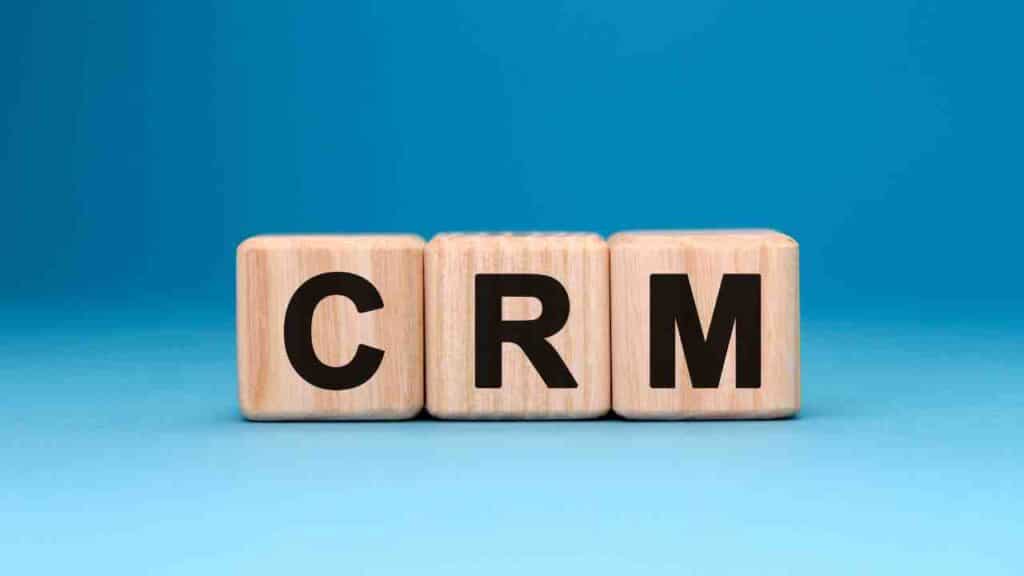Leveraging CRM for Segmentation

Customer Relationship Management (CRM) is a powerful tool that allows businesses to manage and analyze their interactions with customers. It provides valuable insights into customer behavior, preferences, and needs, which can be leveraged to create targeted marketing campaigns and improve overall customer satisfaction. One of the key benefits of CRM is its ability to segment customers based on various criteria, enabling businesses to tailor their marketing efforts to specific customer groups. In this article, we will explore the concept of leveraging CRM for segmentation and discuss how it can benefit businesses in driving growth and success.
What is CRM Segmentation?
CRM segmentation is the process of dividing a customer base into distinct groups based on specific characteristics or behaviors. These groups, or segments, can be created using a variety of criteria such as demographics, purchase history, engagement level, or customer preferences. By segmenting customers, businesses can gain a deeper understanding of their target audience and develop more personalized marketing strategies.
For example, a clothing retailer may segment its customers based on their age, gender, and shopping preferences. This segmentation allows the retailer to create targeted marketing campaigns for different customer groups. They can send tailored promotions to female customers in their 20s who have shown an interest in casual wear, while also sending different offers to male customers in their 40s who prefer formal attire. By understanding the unique needs and preferences of each segment, businesses can deliver more relevant and engaging marketing messages.
The Benefits of CRM Segmentation
Segmenting customers using CRM can provide several benefits for businesses:
- Improved targeting: By dividing customers into segments, businesses can target their marketing efforts more effectively. Instead of using a one-size-fits-all approach, they can tailor their messages and offers to specific customer groups, increasing the likelihood of engagement and conversion.
- Enhanced customer experience: Segmentation allows businesses to deliver personalized experiences to their customers. By understanding their preferences and needs, businesses can provide relevant recommendations, offers, and content, creating a more positive and engaging customer experience.
- Increased customer loyalty: When customers feel understood and valued, they are more likely to remain loyal to a brand. By delivering personalized experiences through segmentation, businesses can build stronger relationships with their customers, leading to increased loyalty and repeat purchases.
- Higher conversion rates: Targeted marketing campaigns have been shown to have higher conversion rates compared to generic campaigns. By tailoring messages and offers to specific customer segments, businesses can increase the likelihood of conversion and drive revenue growth.
- Cost savings: By focusing marketing efforts on specific customer segments, businesses can optimize their marketing budget and resources. Instead of wasting resources on broad campaigns that may not resonate with all customers, businesses can allocate their resources more efficiently, resulting in cost savings.
How to Leverage CRM for Segmentation
Now that we understand the benefits of CRM segmentation, let’s explore how businesses can effectively leverage CRM for segmentation:
1. Define segmentation criteria
The first step in leveraging CRM for segmentation is to define the criteria that will be used to divide customers into segments. This can include demographic information, purchase history, engagement level, geographic location, or any other relevant data points. It is important to choose criteria that are meaningful and actionable, allowing businesses to create targeted marketing campaigns based on the segments.
2. Collect and analyze customer data
Once the segmentation criteria are defined, businesses need to collect and analyze customer data to identify patterns and trends. CRM systems can collect data from various sources, including website interactions, social media engagement, email marketing campaigns, and customer surveys. By analyzing this data, businesses can gain insights into customer behavior and preferences, which can then be used to create segments.
3. Create customer segments
Using the insights gained from data analysis, businesses can create customer segments within their CRM system. This can be done by applying filters and rules based on the defined segmentation criteria. For example, a business may create a segment of customers who have made a purchase in the last 30 days and have shown an interest in a specific product category. By creating segments, businesses can easily target specific groups of customers with tailored marketing campaigns.
4. Develop targeted marketing campaigns
Once the segments are created, businesses can develop targeted marketing campaigns for each segment. This involves creating personalized messages, offers, and content that resonate with the unique needs and preferences of each segment. For example, a business may send a discount code for a specific product category to customers who have previously shown an interest in that category. By delivering relevant and personalized content, businesses can increase the effectiveness of their marketing campaigns.
5. Monitor and measure campaign performance
After launching targeted marketing campaigns, it is important to monitor and measure their performance. CRM systems provide valuable analytics and reporting features that allow businesses to track the success of their campaigns. By analyzing key metrics such as open rates, click-through rates, conversion rates, and revenue generated, businesses can assess the effectiveness of their segmentation strategy and make data-driven decisions for future campaigns.
Case Study: XYZ Company
XYZ Company, a leading e-commerce retailer, successfully leveraged CRM for segmentation to drive growth and increase customer satisfaction. By implementing a CRM system and segmenting their customer base, XYZ Company was able to achieve the following results:
- Increased conversion rates by 20%: By delivering personalized offers and recommendations to specific customer segments, XYZ Company saw a significant increase in conversion rates. Customers were more likely to make a purchase when they received tailored promotions that matched their preferences.
- Improved customer retention: Through segmentation, XYZ Company was able to identify customers who were at risk of churn and proactively engage with them. By delivering personalized retention offers and providing exceptional customer service, XYZ Company was able to retain more customers and reduce churn rate by 15%.
- Higher customer satisfaction: By delivering personalized experiences and relevant content, XYZ Company saw an increase in customer satisfaction scores. Customers appreciated the tailored recommendations and offers, which resulted in a higher Net Promoter Score (NPS) and positive reviews.
Get Your FREE 14-Day Trial and Take Your Business To The Next Level with an All-In-One Sales and Marketing Platform for businesses, agencies and marketers.
Leveraging CRM for segmentation is a powerful strategy that can help businesses drive growth, increase customer satisfaction, and improve marketing effectiveness. By dividing customers into distinct segments based on specific criteria, businesses can deliver personalized experiences, targeted marketing campaigns, and relevant content. This leads to improved customer loyalty, higher conversion rates, and cost savings. By implementing CRM systems and following the steps outlined in this article, businesses can unlock the full potential of CRM segmentation and achieve success in today’s competitive market.
Visit https://SaasExpert.ca – Your All-In-One Sales and Marketing Platform for small businesses, agency owners, and marketers.
Learn more about “Utilizing CRM for Customer Targeting” here.
Frequently Asked Questions about Leveraging CRM for Segmentation

🧐 What Does It Mean to Leverage CRM for Segmentation?
Leveraging CRM for segmentation essentially means utilizing the data management and analytical tools of your Customer Relationship Management (CRM) system to divide your customer base into smaller, more focused groups. Why is this so game-changing? 🎮
Segmentation allows you to tailor your marketing and sales efforts to different audiences, making your campaigns more personalized, engaging, and ultimately, more effective. 🎯
💡 How Do I Use My CRM System for Segmentation?
Eager to dive in? Great! 🏊♀️ First, you’ll need to decide on your segmentation criteria. This could range from basic demographic factors like age and location to more nuanced indicators like purchasing behavior or interaction history. 📊
Once you’ve figured out your categories, you can use your CRM’s data filtering and analytics tools to create these customer segments. Many advanced CRMs even allow for dynamic segmentation, where segments automatically update based on real-time data. 🔄
✅ What Are the Advantages of Using CRM for Segmentation?
Hold onto your hats because the benefits are abundant! 🎩
Personalization: A segmented customer base allows for highly personalized marketing campaigns, skyrocketing engagement, and conversion rates. 🚀
Efficiency: By focusing your efforts on segments more likely to convert, you save both time and resources. ⏳💰
Customer Satisfaction: Segmentation helps you better understand your customers’ needs, allowing you to provide them with more valuable and relevant experiences. 😊
Data-Driven Decisions: With the metrics and insights provided by your CRM, you can continually refine your segmentation strategies for ever-increasing effectiveness. 📈
🤔 Are There Any Risks or Downsides to CRM Segmentation?
Ah, the flip side of the coin. While CRM segmentation has its fair share of benefits, it’s not without its risks. 🛑
Data Quality: If your data is outdated or inaccurate, your segmentation will be off, leading to less effective or even damaging campaigns. 🙅♀️
Over-Segmentation: Too many segments can make your campaigns complicated and unmanageable, diluting your focus and effectiveness. 🤯
Costs: Advanced CRM tools with powerful segmentation features can be pricey. Make sure the benefits outweigh the costs. 💸
📊 How Can I Measure the Success of My Segmentation Efforts in CRM?
We’re all about those numbers, aren’t we? 📏 Key Performance Indicators (KPIs) you’ll want to track include:
Conversion Rates: Are more people taking the actions you want them to take (like making a purchase or signing up for a newsletter)? 📈
Customer Engagement: Metrics such as open rates, click-through rates, and social media interactions can provide insights into how engaged your segments are. 👁️
Customer Lifetime Value (CLV): Are customers in certain segments spending more over time? This could validate the effectiveness of your segmentation. 💎
Monitor these metrics closely, adjust your strategies as needed, and get ready to celebrate those wins! 🎉






